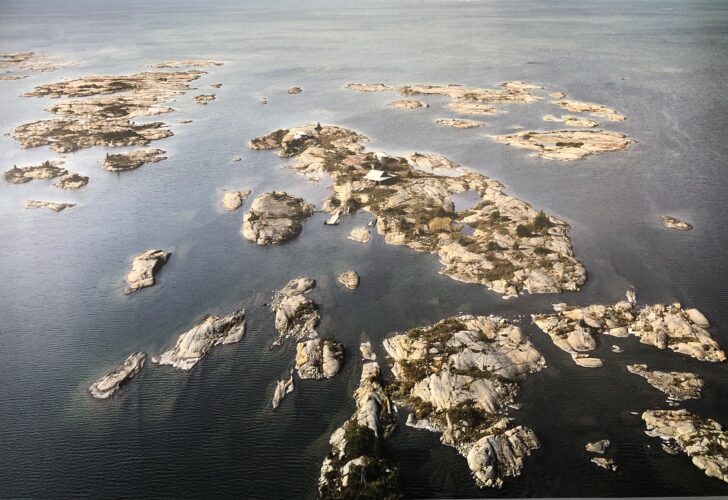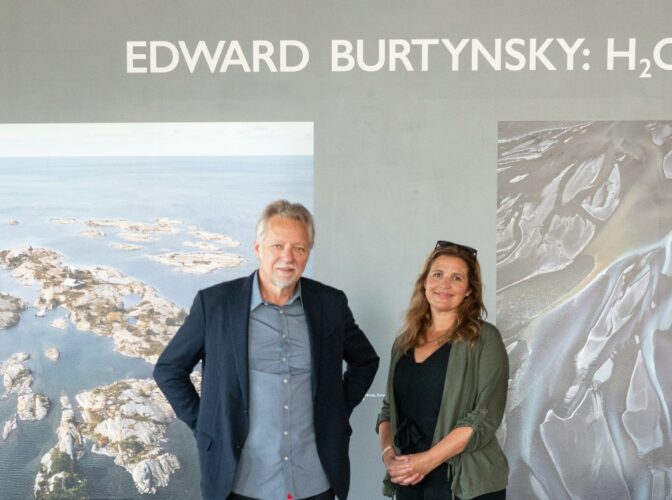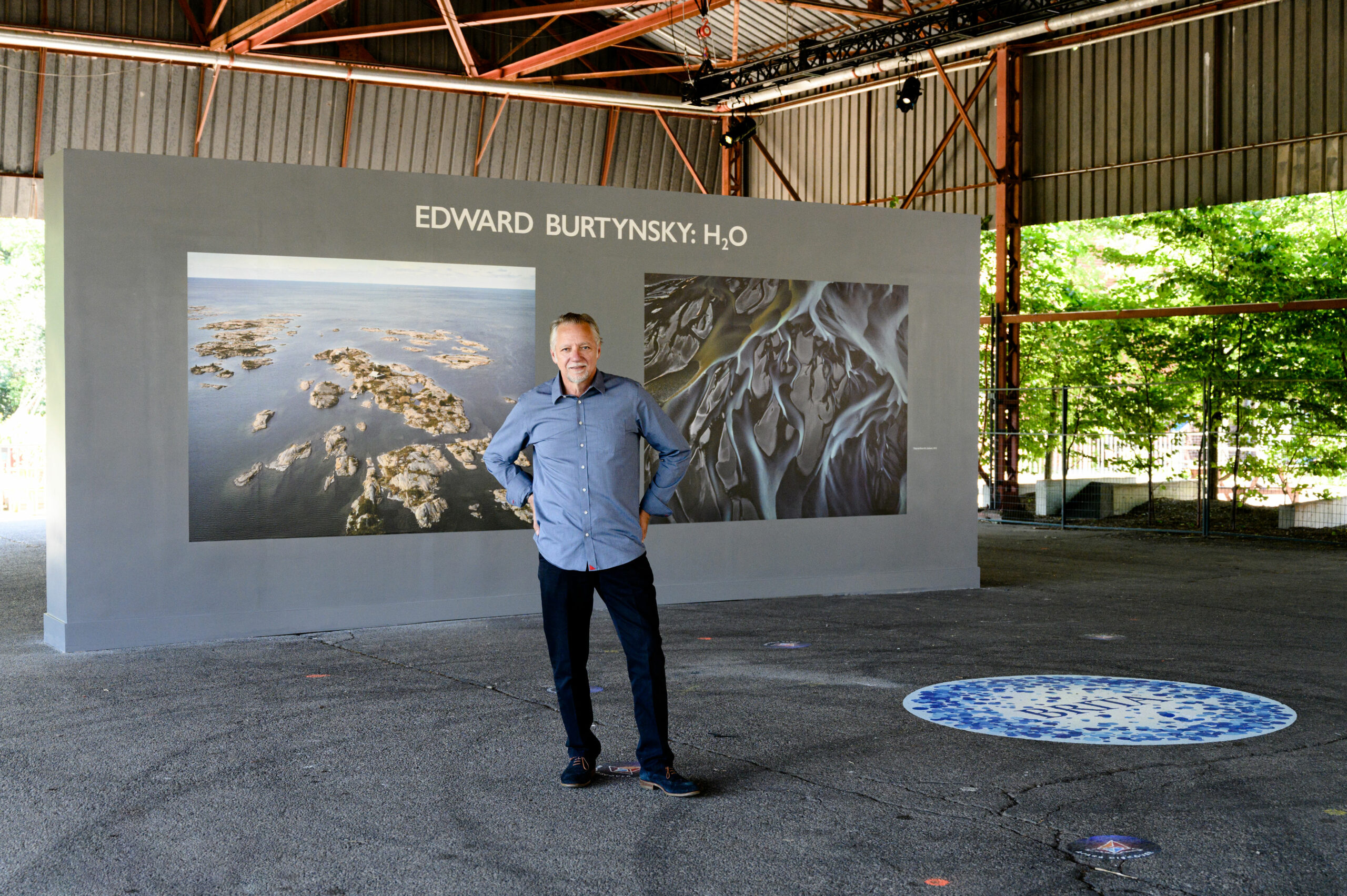Did you know that it can take over 450 years for a single plastic water bottle to decompose? Meanwhile, one million single-use plastic water bottles are consumed every minute globally, according to latest estimates. That equates to over 500 billion bottles year. Canadians alone consume approximately 2.5 billion litres of bottled water that results in 10,000 tonnes of plastics entering the Great Lakes every year.
A new exhibit at Evergreen Brick Works in Toronto, Ontario highlights the adverse impact of single-use plastic bottle pollution through world renowned photographer Edward Burtynsky’s thought-provoking work and a unique Augmented Reality (AR) experience by AVARA Media.
The exhibit, titled H20, includes works from Burtynsky’s Water series and is featured alongside the AR experience that helps guests visualize the adverse impacts of single-use plastic bottle waste, a problem with devastating consequences for human health, wildlife, and water quality.
“We have been given this incredible geography in terms of our population,” said Burtynsky, who has had a lifelong love of hiking and canoeing. “As a contemporary artist, what can I do to help maintain these natural resources that is relevant to my time?”
At the exhibit opening on August 5, 2021, Burtynsky provided insights into his journey of focusing on man-altered and natural landscapes in Canada and internationally. He described the devastation he witnessed due to drought in places such as Australia, which are now similar to droughts happening in Western Canada this summer.
“We have work-arounds for oil. We can use solar, wind, and we can insulate better, and buy electric cars. There are alternatives to burning oil,” he stated. “But when it comes to water, no water means no life.”

Burtynsky emphasized the importance of Canada’s role in protecting our natural resources and abundance of freshwater—with the Great Lakes constituting the largest amount of surface freshwater in the world at 21 per cent, with another two million freshwater lakes in the north representing an additional 10 per cent.
“Helping Canadians make more informed, sustainable choices is a vital part of Brita’s mission,” said Lindsey Frimet, marketing lead for Brita Canada, a sponsor of the event. “We are honored to be part of this exhibit to make the impacts of waste more tangible to consumers. Few things exemplify the human impact on the planet more than Edward Burtynsky’s iconic photographs.”
According to Burtynsky, the goal of the images exhibited is to help Canadians appreciate pristine nature and understand the impact their consumption is having on it—a mission that is aligned with Brita’s goal to help Canadians understand the power of their actions in making more sustainable choices.
“Take a walk anywhere up north, or along the shoreline at the beach, or along the waterfront of Toronto, or down a path that follows a creek in your town. Discarded single-use plastic bottles are everywhere, and we know what happens to them,” said the Canadian photographer. “If they aren’t picked up and put into the recycling by conscientious citizens, they will stay right there.”
While Burtynsky’s work provides a more meditative contemplation of these landscapes for visitors and an underlying understanding of how our choices impact them, the immersive AR experience puts visitors at the center of their impact. The AR experience was created for Brita by AVARA Media (co-founded by Burtynsky and Vikas Gupta).

“Our vision at AVARA is ‘Building Better Worlds’. We are leveraging the magic of Augmented Reality to engage users in an immersive way to experientially connect them to the biggest environmental and ecological issues our planet is facing,” commented Vikas Gupta, CEO of AVARA. “Experiencing the profound adverse impact of plastic is a far greater catalyst to change than simply hearing about it.”
The AR exhibit transforms the floor into a six-foot-wide sinkhole where single-use plastic bottles fall into an abyss that is rapidly filling with water until it rushes upwards filling the space in front of them with a swirling column of facts about the impact of plastic bottle waste. It ends with a pyramid of 1,800 plastic water bottles in front of the visitor, showing them firsthand the effects of choosing bottled water and why filtered water in a reusable bottle is the more sustainable choice.
Brita has also developed a partnership with TerraCycle, where Canadians can sign up online to be part of a mail-in program to recycle their old Brita products. The TerraCycle bins will be onsite for the duration of the exhibit so visitors can recycle their old products to give them a new life.
“The impacts of the H20 exhibit at Evergreen Brick Works will be felt beyond the five days this collection from Burtynsky will be on display,” added Frimet. “It’s about drawing the link between our everyday choices and the impact they have. Sometimes it takes an experience like this to realize that.”
The exhibit will be open to the public until August 8th, 2021 at Evergreen Brick Works.
Some images from the gallery are available here.
Access the AR experience here.
Header image courtesy of Devon Consulting, by Mauricio J Calero Photography.









